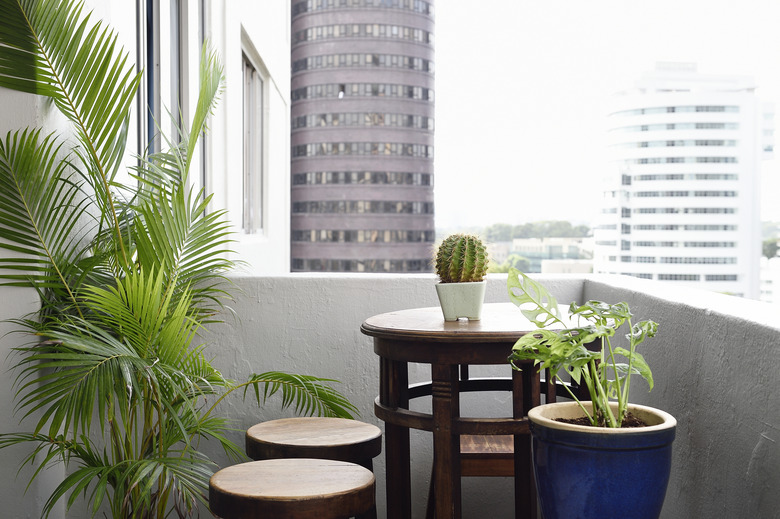How Do I Care For A Palmera Plant?
We may receive a commission on purchases made from links.
Are you wondering how to care for your palmera plant (Dypsis lutescens, USDA zones 10-11)? This easy-care houseplant goes by several other names, including areca palm, bamboo palm and butterfly palm. With proper treatment, your palmera plant can live up to 10 years.
Tip
Caring for your palmera plant requires adequate watering and the proper amount of light as well as occasional transplants to accommodate a growing plant.
Palmera Plant Appearance and Environment
Palmera Plant Appearance and Environment
Palmeras are often kept as small tabletop plants, though larger potted varieties are also sold. Palmeras grow about 6 to 10 inches every year, and they can grow up to 30 feet tall in the landscape, although potted plants are much smaller because of the confines of their containers. Palmeras have smooth trunks (canes) that look similar to bamboo, and their leaves are long and narrow and grow in fronds.
When healthy, the leaves grow out fully; this is another thing palmeras have in common with bamboo plants. They need indirect, bright light that comes in from a west-facing or south-facing window. The deep-green leaves may yellow if there is too much direct light. When outside, they do best in constant filtered sunlight or partial shade in slightly acidic, well-drained soil.
Caring for Palmera Plants
Caring for Palmera Plants
The soil should be checked often and only watered enough to keep it lightly moist. Let the soil dry out a little bit between waterings. It is best to use either collected rainwater or distilled water, as palmeras do not like fluoridated water, which can burn leaf margins.
You can add a timed-release fertilizer every spring, which should last for a whole year. Palmeras also do well with liquid houseplant fertilizers, and this can also be done once every year but only in the summertime. Check the product labels before buying to ensure that whatever you use is safe for palms. Avoid fertilizing your palmera in the fall or winter.
What About Repotting?
What About Repotting?
If your indoor palmera plant is thriving, it will likely need to be repotted every few years. Pot your palmera in a container with drainage holes so as to avoid waterlogged roots. Use a palm plant potting soil and do not plant the palmera too deep. A rule of thumb is to plant it at the same depth it sat in the previous pot.
Be careful with the plant's roots since they are brittle. Spreading them out could damage them. Fill in the soil around the roots and pack it down firmly with your hands. Then, flood the pot with water and press down another time to eliminate air pockets, adding any additional soil if necessary.
General Palmera Health
General Palmera Health
Look at your palmera's canes regularly and ensure that they are golden yellow. If they start to lose color or turn gray or brown, take a sharp knife and slice off a very thin strip. If it looks green inside, the cane is alive. Dark colors mean that the cane has died and should be removed with a pair of garden clippers.
Always cut your palmera canes at ground level. Verify that the canes are dead before removing them because pruning too many could kill the plant. Do not trim the individual leaves either. Only trim entire fronds when they are completely brown since the green parts are still providing nutrients to the plant.
